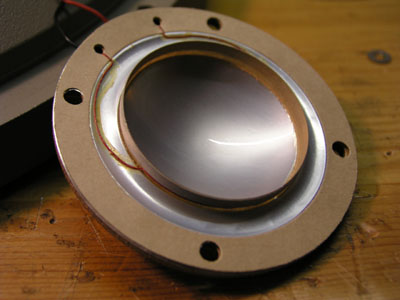
- #Tannoy dual concentric 15 driver drivers
- #Tannoy dual concentric 15 driver driver
- #Tannoy dual concentric 15 driver professional
This in turn means that a simpler crossover can be used, providing even greater sonic benefits.
#Tannoy dual concentric 15 driver drivers
With the Tannoy dual concentric drivers there is a tight physical integration of the high and lowįrequency drivers, leading to a coherent and linear phase response. With a true point source design there are little or no time and phase differences between harmonics either side of the crossover region.įurthermore, there tends to be a more accurate balance between the fundamentals and harmonics, not only on axis, but even off axis, where many do a great deal of their listening.

This destroys absolute phase coherency and produces different effects at different axial positions. You therefore have spectral elements of the same note being reproduced by two very different drivers and reaching your ears at different points in time due to the different position of the drivers. The problem is, even the lower frequency fundamentals will have harmonics way above the range of the bass/mid driver, which are passed to the tweeter.
#Tannoy dual concentric 15 driver driver
Part of the sound, including many of the fundamental frequencies, will be handled by the bass/mid driver and part of the sound will be handled by the

Imagine for example the sound of a viola playing a single musical line, reproduced via a typical two driver loudspeaker system. This is complicated by the cossover distributing different parts of the same sound to different physical drivers, which cannot help but to destroy the cohesiveness of the wavefront received at the listening position. In conventional multi driver systems, the sound is emanating from different physical planes and positions, making off axis response rather variable. The most obvious being the true point source emanation of sound waves which ensures a phase coherency not attainable by other means. There are several inherent virtues of the dual concentric design. Principles were so "right" that they are still highly relevant today. Steady evolution has seen the dual concentric reach new levels of performance and value as well as a broader range of potential applications. That is not to suggest that Tannoy have stood still in that time. I have been listening to Tannoys, either professionally or privately, for over 30 years and, while I have heard a great many other classic designs in that time, there is still something about the Tannoy sound that is at once unique and comfortable. The author has a pair of DC1000s, a previous design featuring a similar sized (200mm) dual concentric driver which will be used for the purposes of this article. The speaker pictured above is a Saturn S8LR from the current range. Note, we are speaking here of true point source designs, not simple concentric arrays. KEF with it's Uni-Q range) have successfully followed suit. Curiously, Tannoy have been promoting the virtues of a true point source design, as offered by the dual concentric drivers, for well over 40 years and yet it is only comparatively recently that other manufacturers (e.g. The Tannoy range, even today, features many designs, but it is the dual concentrics which attract the most interest. Many design approaches have been featured but, for many, Tannoy is synonymous with dual concentric loudspeaker drivers.

#Tannoy dual concentric 15 driver professional
Throughout this long and illustrious history Tannoy have designed and manufactured a vast range of loudspeakers for professional audio monitoring, public address, live sound reinforcement and of course domestic audio.

In the fast moving world of audio and hi-fi where new names seem to crop up every other month, it is refreshing to note that English loudspeaker manufacturer Tannoy is 75 years old. Product: Tannoy Dual Concentric Loudspeakers Tannoy Dual Concentric drivers - a survey A survey on Tannoy Dual Concentric Loudspeakers The Point Source Approach


 0 kommentar(er)
0 kommentar(er)
